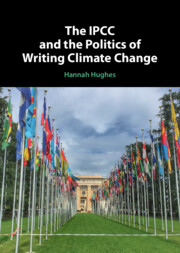75 results
Coordination and cooperation in asymmetric commons dilemmas
-
- Journal:
- Experimental Economics / Volume 14 / Issue 4 / November 2011
- Published online by Cambridge University Press:
- 14 March 2025, pp. 547-566
-
- Article
- Export citation
Seminal contributions of Timothy J. Crow
-
- Journal:
- Psychological Medicine / Volume 55 / 2025
- Published online by Cambridge University Press:
- 07 March 2025, e75
-
- Article
-
- You have access
- Open access
- HTML
- Export citation
Coordination and cooperation in asymmetric commons dilemmas: a replication study
-
- Journal:
- Journal of the Economic Science Association / Volume 9 / Issue 1 / June 2023
- Published online by Cambridge University Press:
- 17 January 2025, pp. 123-135
-
- Article
- Export citation
Analysis of Asymmetry by a Slide-Vector
-
- Journal:
- Psychometrika / Volume 58 / Issue 1 / March 1993
- Published online by Cambridge University Press:
- 01 January 2025, pp. 101-114
-
- Article
- Export citation
Malmö, Simrishamn, and Norrland: asymmetry in the categorization of place
-
- Journal:
- Nordic Journal of Linguistics , First View
- Published online by Cambridge University Press:
- 23 December 2024, pp. 1-26
-
- Article
-
- You have access
- Open access
- HTML
- Export citation
Case 8 - Postpolio Syndrome (PPS); Poliomyelitis Anterior Acuta, West Nile Virus Poliomyelitis, Acute Flaccid Weakness in Children
- from Disorders of the Anterior Horn Cell
-
- Book:
- Neuromuscular Disease
- Published online:
- 29 November 2024
- Print publication:
- 19 December 2024, pp 91-92
-
- Chapter
- Export citation
Case 13 - Vasculitic Neuropathy
- from Peripheral Neuropathies
-
- Book:
- Neuromuscular Disease
- Published online:
- 29 November 2024
- Print publication:
- 19 December 2024, pp 107-109
-
- Chapter
- Export citation

The IPCC and the Politics of Writing Climate Change
-
- Published online:
- 04 July 2024
- Print publication:
- 31 October 2024
-
- Book
-
- You have access
- Open access
- Export citation
Chapter 8 - Quantitative EEG (EEG Trend Analysis)
- from Part I - Introduction
-
- Book:
- Critical Care EEG Basics
- Published online:
- 22 February 2024
- Print publication:
- 29 February 2024, pp 109-122
-
- Chapter
- Export citation
39 Does Pseudoneglect Modifies The Visuospatial After-Effects Of Vertical Prism Adaptation?
-
- Journal:
- Journal of the International Neuropsychological Society / Volume 29 / Issue s1 / November 2023
- Published online by Cambridge University Press:
- 21 December 2023, pp. 913-914
-
- Article
-
- You have access
- Export citation
4 - Time in Space
-
- Book:
- Time, Metaphor, and Language
- Published online:
- 09 November 2023
- Print publication:
- 23 November 2023, pp 50-81
-
- Chapter
- Export citation
Sino–Japanese third-party market cooperation: asymmetries of economic diplomacy and politico-economic gaps
-
- Journal:
- Japanese Journal of Political Science / Volume 25 / Issue 1 / March 2024
- Published online by Cambridge University Press:
- 01 September 2023, pp. 1-20
-
- Article
-
- You have access
- Open access
- HTML
- Export citation
1 - Continuities in China’s Pacific Asian Centrality
-
- Book:
- Recentering Pacific Asia
- Published online:
- 03 August 2023
- Print publication:
- 17 August 2023, pp 23-44
-
- Chapter
- Export citation
Introduction
-
- Book:
- Recentering Pacific Asia
- Published online:
- 03 August 2023
- Print publication:
- 17 August 2023, pp 1-22
-
- Chapter
- Export citation
Commentary
-
- Book:
- Recentering Pacific Asia
- Published online:
- 03 August 2023
- Print publication:
- 17 August 2023, pp 71-76
-
- Chapter
- Export citation
Effectiveness of the sternocleidomastoid muscle contraction asymmetry and filter: cervical vestibular evoked myogenic potential
-
- Journal:
- The Journal of Laryngology & Otology / Volume 138 / Issue 4 / April 2024
- Published online by Cambridge University Press:
- 15 August 2023, pp. 410-415
- Print publication:
- April 2024
-
- Article
-
- You have access
- HTML
- Export citation
Chapter 11 - Afterword
- from Part III - ‘Translation at Large’: Dialogues on Ethics and Politics
-
-
- Book:
- Performance and Translation in a Global Age
- Published online:
- 10 August 2023
- Print publication:
- 29 June 2023, pp 244-247
-
- Chapter
- Export citation
22 - Care
- from Part IV - Intimate and Everyday Life
-
-
- Book:
- The Cambridge Handbook for the Anthropology of Ethics
- Published online:
- 11 May 2023
- Print publication:
- 25 May 2023, pp 561-590
-
- Chapter
- Export citation
Asymmetry and symmetry of acts and omissions in punishment, norms, and judged causality
-
- Journal:
- Judgment and Decision Making / Volume 16 / Issue 4 / July 2021
- Published online by Cambridge University Press:
- 01 January 2023, pp. 796-822
-
- Article
-
- You have access
- Open access
- HTML
- Export citation
THE COLONIALITY OF INTERNATIONAL INVESTMENT LAW IN THE COMMONWEALTH CARIBBEAN
-
- Journal:
- International & Comparative Law Quarterly / Volume 72 / Issue 1 / January 2023
- Published online by Cambridge University Press:
- 11 January 2023, pp. 105-145
- Print publication:
- January 2023
-
- Article
-
- You have access
- Open access
- HTML
- Export citation


